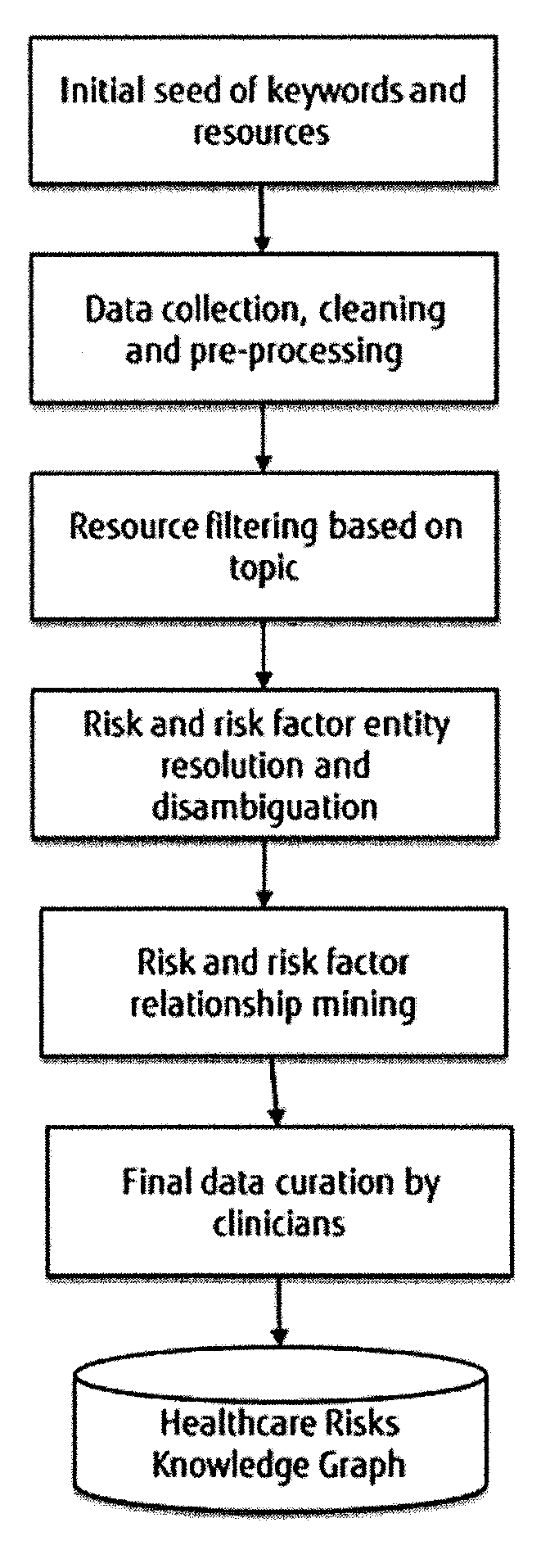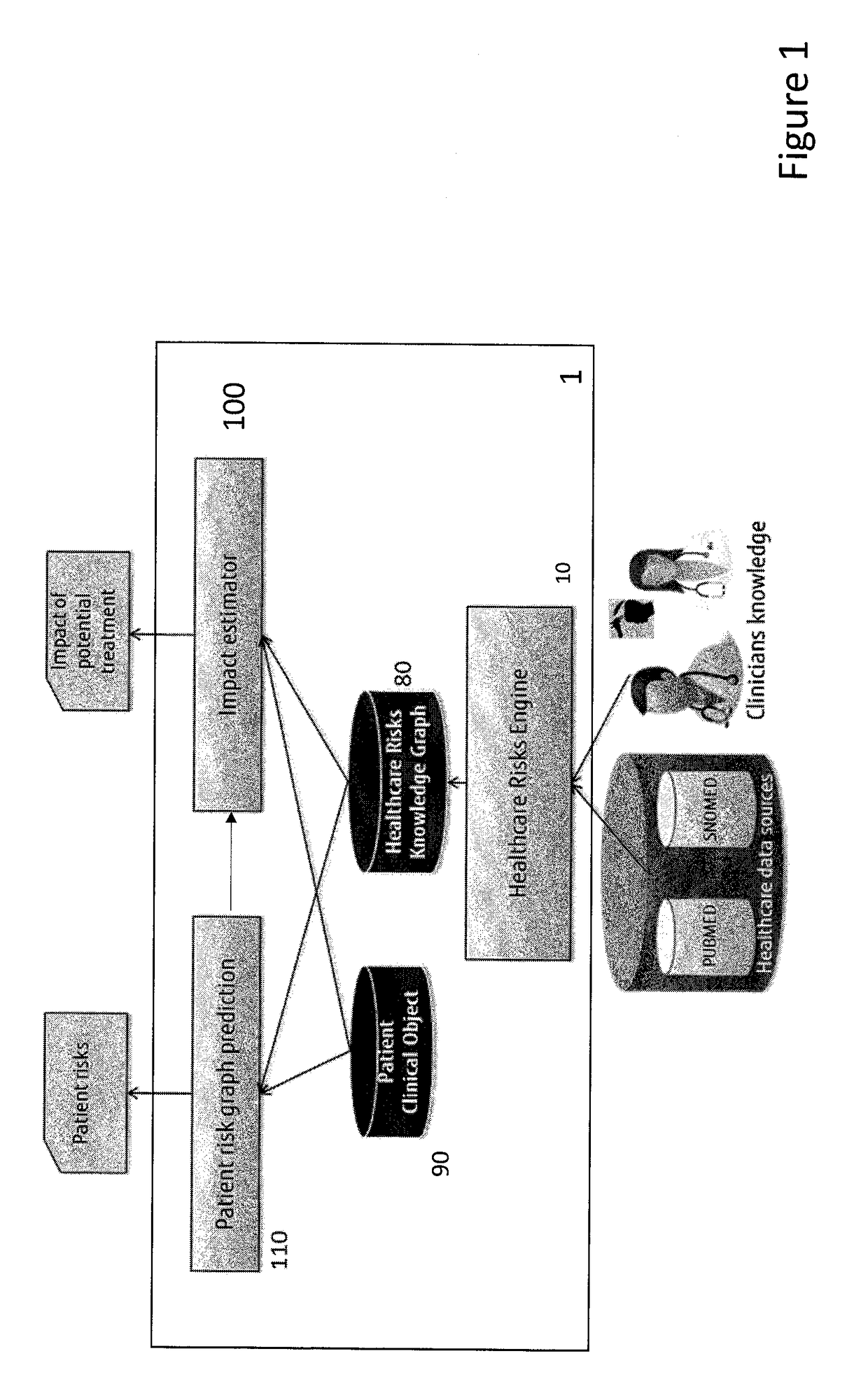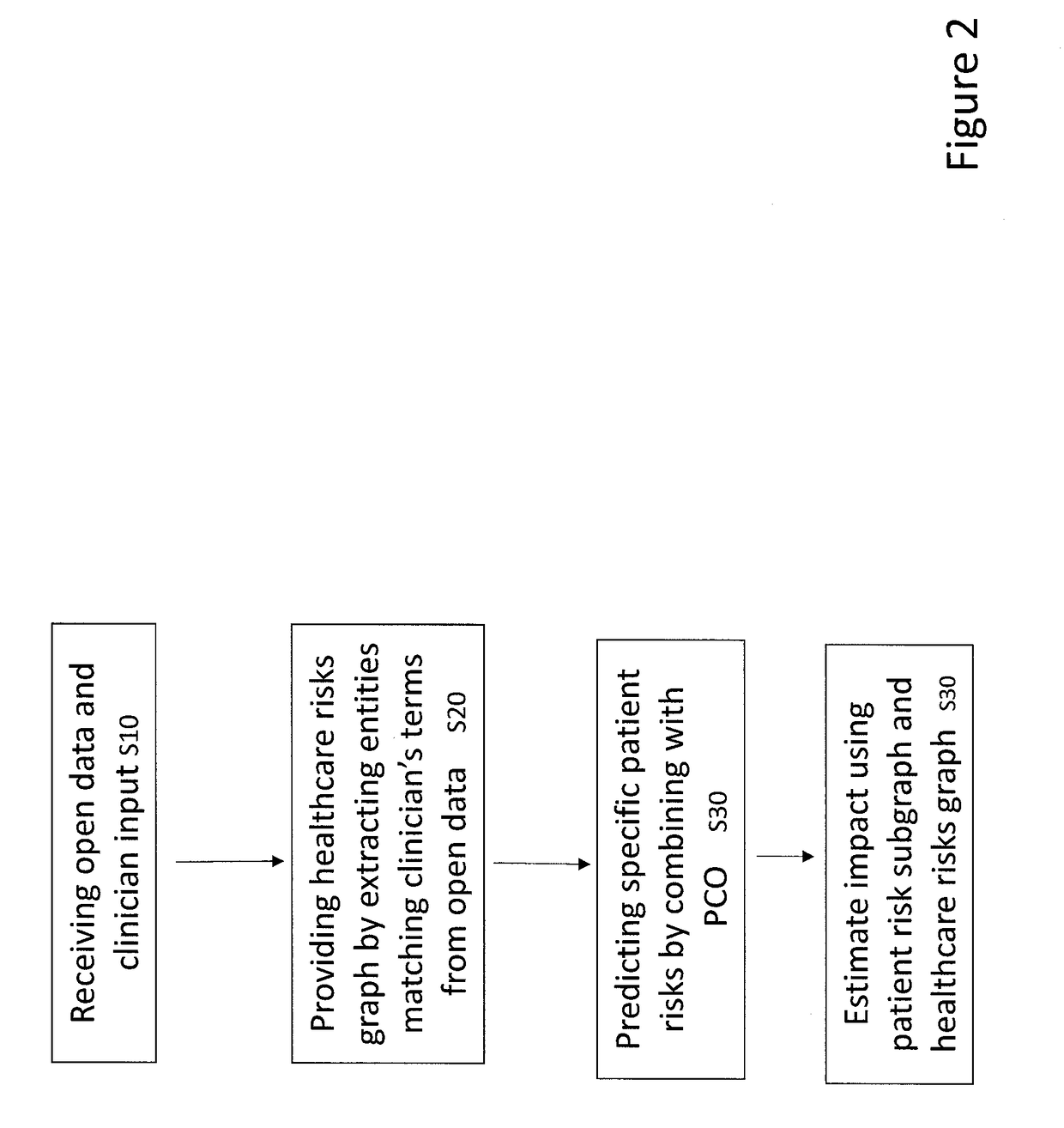System and a method for assessing patient treatment risk using open data and clinician input
- Summary
- Abstract
- Description
- Claims
- Application Information
AI Technical Summary
Benefits of technology
Problems solved by technology
Method used
Image
Examples
Embodiment Construction
[0058]Embodiments of the invention may aim:[0059]to create a network of Health Risks, represented as a Knowledge Graph, extracted from the literature and public data sources together with the clinicians' expertise on risk assessment;[0060]to develop a mechanism that identifies the associated risks for a particular patient given his / her clinical history information, such as, diagnoses, drugs, and symptoms; enrich the patient clinical history with his / her risk information; and[0061]to develop a mechanism that identifies the associated risks of a patient after applying a particular treatment.
[0062]Precision medicine is a medical model that proposes the customisation of healthcare, tailored to the individual patient / subject. This is an emerging approach for disease diagnosis, treatment and prevention that takes into account individual variability in genes, physiology, anatomy, environment, and lifestyle. In this context invention embodiments support the individual variability of the pat...
PUM
 Login to View More
Login to View More Abstract
Description
Claims
Application Information
 Login to View More
Login to View More - R&D
- Intellectual Property
- Life Sciences
- Materials
- Tech Scout
- Unparalleled Data Quality
- Higher Quality Content
- 60% Fewer Hallucinations
Browse by: Latest US Patents, China's latest patents, Technical Efficacy Thesaurus, Application Domain, Technology Topic, Popular Technical Reports.
© 2025 PatSnap. All rights reserved.Legal|Privacy policy|Modern Slavery Act Transparency Statement|Sitemap|About US| Contact US: help@patsnap.com



